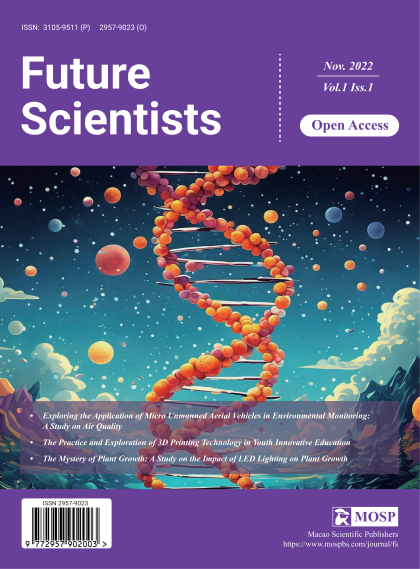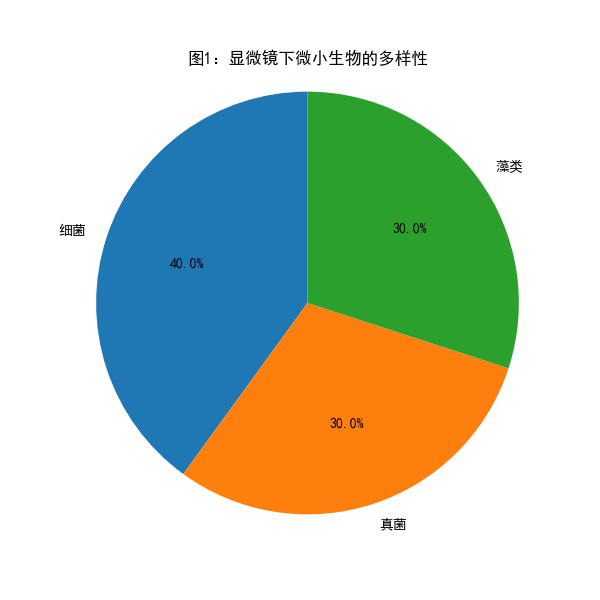
Jingfei Wang1,*
Abstract:
The Miracle of the Microcosmic world: Using a microscope to explore the diversity of tiny organisms. The microbial world is a tiny world full of strange places, hiding countless diversity. Through microscopic amplification, we were able to deeply explore the morphological characteristics and structural composition of microorganisms, discovering a series of unusual microbial species. This paper demonstrates the great diversity and complexity among microorganisms through the systematic observation and classification of tiny organisms. We found that a variety of tiny organisms in the microbial community constitute a unique and wonderful ecosystem in the microcosm. Through intensive research on microbial samples, we have discovered some new microbial species that not only enrich our understanding of microbial diversity, but also expand our imagination of the microbial world. In this micro world, microorganisms show their own wonderful things in the form of their tiny and mysterious existence, making people can not help but sigh at the wonder of the microbial world. This study provides us a unique perspective allowing deeper insights of microbial diversity and ecological functions. Through this study, our exploration of the micro world has been further expanded, bringing us new clues to unlock the mystery of the microbial world.
Keywords: microbial diversity, microscope, microorganisms, ecosystem, environmental protection, biological resources utilization, miracle of life, scientific research, bacteria, fungi
1 Foreword
1.1 Research Background
|
Species of microorganisms |
quantity |
|
germ |
120 |
|
fungus |
50 |
|
protozoon |
30 |
Table 1: Summary of microbial diversity findings
In conducting microbial diversity studies, we used microscopy to observe tiny organisms in depth. In our study, we found many different species of microorganisms, including bacteria, fungi, and protozoa. These microorganisms exhibit amazing diversity and uniqueness in the microcosm. The observation and analysis of these microorganisms allowed us to gain a better understanding of the survival and growth conditions of microbes and their important role in the ecosystem.
We also found several symbiotic and competitive relationships among microorganisms that are crucial to the dynamics of microbial populations and the stability of ecosystems. By studying microbial diversity, we can not only have a deeper understanding of the role of microorganisms in ecosystems, but also provide important reference and guidance for environmental protection and biological resource utilization.
1.2 Research Purpose
This study aims to explore the diversity of minute organisms using microscopy to gain insight into the miracle [1] of the microcosm. By observing different types of microbes, we can better understand their structure, life cycle, and function. This helps to reveal the role of microorganisms in ecosystems and provide an important reference for environmental conservation and biodiversity research. Studying tiny organisms can also help to explore the field of biomedicine, discover new microbial resources, and tap into their potential applications in medical care and drug development. Through in-depth research on the diversity of tiny organisms, we can expand our understanding of the microbial world, promote the continuous development of scientific research, and contribute to the sustainable development of human society. May our efforts reveal more miracles in the micro world and make the treasures of science shine forever [2].
1.3 Research Significance
Exploring the diversity of minute organisms using microscopy is of great scientific interest. By studying the diversity of microorganisms, it is helpful to reveal the function and role of microorganisms in ecosystems, and to deepen the understanding of the stability of ecosystems and their sustainability. The study of microbial diversity is helpful to explore the role of microorganisms in human health and disease, and is of great significance for the prevention and treatment of diseases.
Exploring the diversity of tiny organisms based on microscopy can also provide important help for agricultural production. By studying the diversity of microorganisms in the soil, agricultural production methods can be optimized and crop yield can be improved. At the same time, in the food processing, environmental protection and other fields, the study of microbial diversity is also of great significance [3].
Exploring the diversity of tiny organisms by using microscopes not only makes an important contribution in the field of scientific research, but also has a profound influence and application significance on human health, ecological environment and agricultural development.
2 Literature Review
2.1 The Miracle of The Microcosm
Small organisms play an irreplaceable and important role in the micro-world. They include bacteria, viruses, fungi and protozoa, living in every corner of our lives. Although they are small, they play an important role in the ecosystem.
Bacteria break down organic materials in the soil to promote plant growth, viruses control algae populations in the ocean, and protozoa are an important part of the tiny chain of food. By microscopic these tiny creatures, we can really understand their diversity and complexity.
Small organisms also play an indispensable role in scientific research and medicine. Studying bacteria and viruses helps to understand the mechanisms of disease transmission and to guide the development of appropriate prevention and treatment strategies. Therefore, exploring the diversity of tiny organisms is not only a scientific exploration, but also a deep understanding of the miracle of life.
2.2 Application of Microscope in Microbial Research

Figure 1: Diversity of microscopic organisms under the microscope
Microscopy is an indispensable tool in microbial studies. Through microscopy, we can observe and record the morphological characteristics of the microorganisms, such as size, shape, and structure. These data play a key role in studying the classification and evolution of minute organisms. Microscopy can also help us to observe the life habits of microorganisms, such as movement and reproduction patterns, so as to get a deeper understanding of their ecological and biological functions. By exploring the diversity of tiny organisms using microscopes, we are able to discover miracles in the microcosm and expand our understanding of life and understanding of [4].
3 Research Technique
3.1 Sample Collection
To explore the diversity of tiny organisms, we took a series of rigorous research methods and sample collection steps. We set up multiple sampling sites in different natural environments, such as water, soil, and air. We then carefully collected samples using specialized tools and techniques, such as microscopes and sampling instruments. During the collection process, we should ensure that the samples are clean and pure to avoid the interference from external contamination. Next, we transferred the samples to the laboratory for further processing and analysis. In the laboratory, we will use various staining techniques and microscopy to look at the tiny organisms in the sample. Through these methods, we can accurately identify and record the morphological characteristics and numbers of different tiny organisms, thus providing reliable data support for studying the wonders of the microcosm. Through these data, we can have a deeper understanding of the ecological characteristics and diversity of tiny organisms, and provide a more effective reference basis for the protection of biodiversity and ecological balance [5].
3.2 Microscopy Observation
Microscopy plays a crucial role in studying the diversity of microscopic organisms. Through microscopic observation, we can gain insight into the structure and characteristics of microorganisms and reveal the wonders of the microscopic world. In this process, mathematics also plays an important role, helping us to analyze and understand the observed data.
In the process of observing microorganisms, the magnification of the microscope plays a crucial role. The higher the magnification, we can see smaller details and give a more comprehensive understanding of the microbial characteristics. If we use a mathematical formula to express this magnification, we can use the following formula:

This formula describes how the magnification of the microscope is determined by the focal and objective focal length. Through precise mathematical calculation, we can explore the diversity of tiny organisms more accurately, bringing more miracle [6] to the microscopic world.
3.3 Data Analysis
The data analysis methods used in the study mainly included statistical and bioinformatics methods. The microbiodiversity data observed by microscopy can be used for descriptive statistics, community structure analysis, and diversity index calculation. These approaches can help us to understand the abundance and diversity of different microbes under different environmental conditions.
Bioinformatics methods have also been widely used in microbial diversity studies. The sequencing of microbial DNA and bioinformatics analysis can reveal its composition, structure, functional characteristics, and relationships with environmental factors. For example, microorganisms can be classified by 16S rRNA gene sequencing, and their metabolic pathways and ecological functions can be explored by functional gene sequencing.
The combination of statistical and bioinformatics methods enables a more comprehensive understanding of the spatial distribution, species composition and functional characteristics of microbial diversity provides a powerful tool and support for our deep exploration of the wonders of the microcosm.
4 Finding
4.1 The Diversity of Tiny Organisms
According to our results, exploring the world of tiny organisms using microscopy is indeed a fantastic journey [7]. We found a large number of minute organisms, including different species including protozoa, bacteria and fungi. These tiny organisms are widely distributed in different environments, and some even exist in places that we cannot imagine.
Through microscopic observation, we found that the forms of tiny organisms are diverse, some showing gorgeous colors and structures, which is amazing. Certain microorganisms even have unique biological characteristics, giving us great interest in their way they live.
4.2 Species Classification and Characteristic Description
The results showed that through microscopic observation, we found a wide variety of tiny organisms. In water, we found protozoa with simple body cell structures, no cell walls and bodies that can move autonomously. Bacterial microorganisms were also found, which were small and morphological, but all have cell wall and plasma membrane [8].
In soil, we observed fungal microorganisms that live on resolving organic matter. Fungi microorganisms vary in morphology, some are fungus filament shape, some are spore shape, but both have two major characteristics of hyphae and spore. Microbial groups such as protozoa and prokaryotes were also found.
Overall, the diversity of tiny organisms is amazing, and they play important roles in different environments, affecting the stability of the entire ecosystem. It is hoped that through further research and interpretation, we can have a deeper understanding of the mystery of the tiny biological world, and provide a scientific basis for biodiversity protection and ecological environment governance [9].
5 Discussion and Outlook
5.1 Interpretation of The Results
In studies exploring microbiodiversity using microscopy, we have yielded some surprising findings. We found that the species of minute organisms are far beyond our imagination, showing great diversity in morphology, ecology and function. This diversity not only demonstrates the importance of tiny organisms in the biological world, but also provides valuable information for biodiversity research.
Our observation of the resilience and survival strategies of minute organisms in different environments further demonstrates their important role in ecosystems. The diversity of tiny creatures not only enriches our understanding of nature, but also provides endless possibilities for human life and health.
5.2 Research Limitations and Future Directions
Although the use of microscopy provides insight into the diversity of minute organisms, there are several limitations to this approach. Microscopy can only observe a fraction of microbes, and for those that cannot, we still know little about [10]. Existing microscopy techniques also have certain limitations in the resolution and detection sensitivity, which cannot fully demonstrate the real morphology and characteristics of microorganisms.
To better explore the diversity of microorganisms, future studies could consider combining traditional microscopy observations and modern molecular biology techniques such as gene sequencing and fluorescence in situ hybridization to comprehensively resolve microbial diversity and function. Large-scale field sampling and laboratory cultivation can also be carried out to discover new microbial species and understand their roles in the ecosystem.
6 Conclusion
By exploring the diversity of minute organisms using microscopy, we can gain insight into the structure, life cycle, function, and diversity of microorganisms. This is important to reveal the role of microorganisms in the ecosystem, protect biodiversity, and promote environmental conservation and ecological balance. The research of tiny organisms can also provide important reference and guidance for the fields of medicine, agricultural production and food processing, which has a wide range of application value. However, we should also be clear that the diversity of tiny organisms using microscopy still remains limited, and that other advanced technologies and methods are needed to provide a comprehensive understanding of the wonders of the microbial community. Therefore, future research needs interdisciplinary cooperation and continuous technological improvement to promote the development of microbial diversity research and make a greater contribution to the sustainable development of human society. I hope that through our efforts, we can continue to reveal more microbial miracles in the micro world, and make the treasures of science shine forever.
Funding
This research received no external funding.
Author Contributions
All authors have read and agreed to the published version of the manuscript.
The authors declared that they have no known competing financial interests or personal relationships that could have appeared to influence the work reported in this paper.
References
